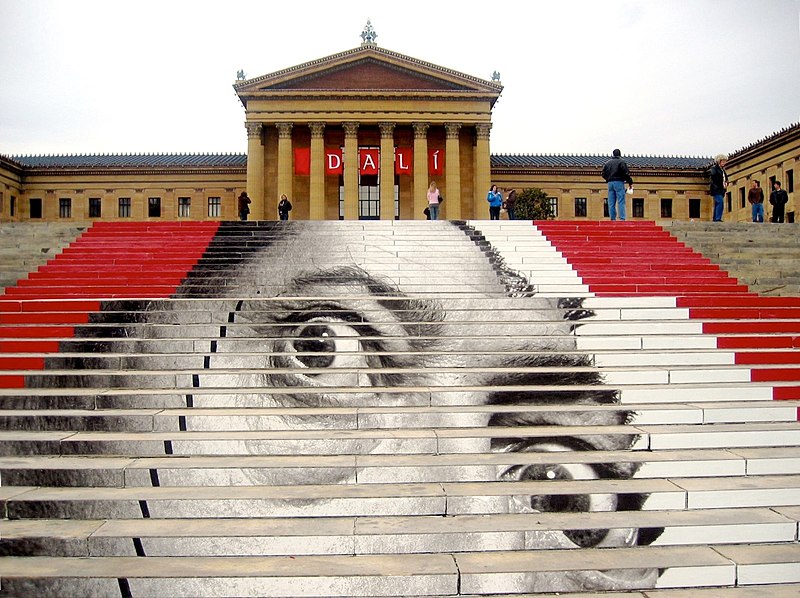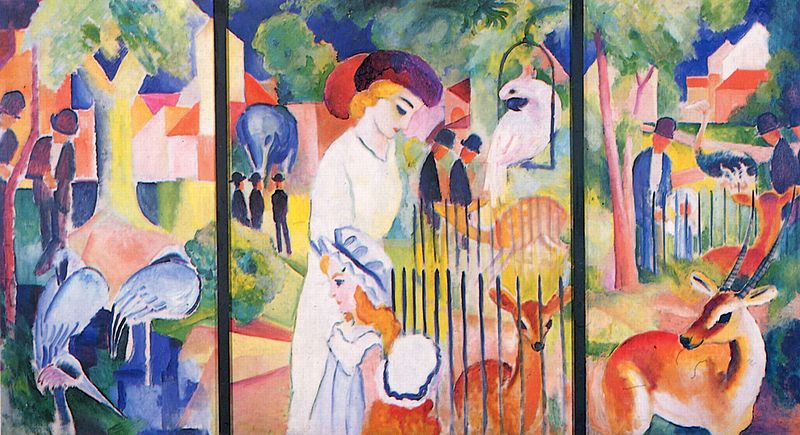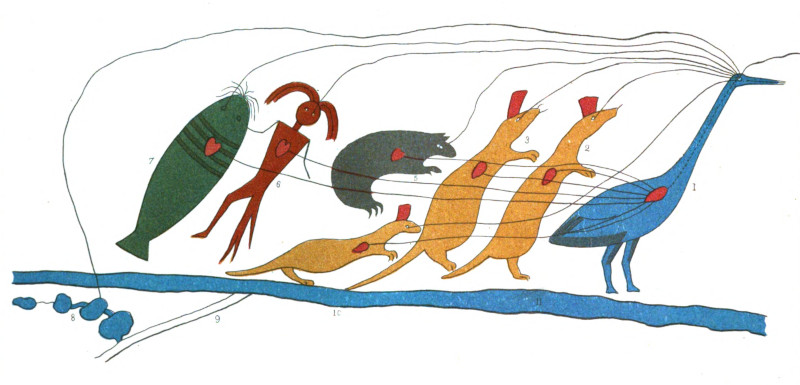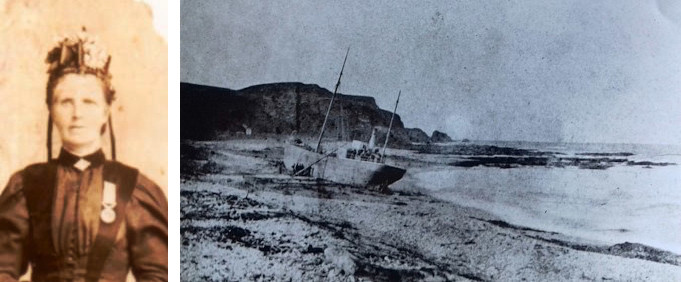From reader Éric Angelini:
What is the smallest number that doesn’t have a 1 and yet has one?
From reader Éric Angelini:
What is the smallest number that doesn’t have a 1 and yet has one?

This is charming: Looking for a place to practice her drawing one day, an anonymous child in the 1700s chose the blank spaces in a music book. In doing so, she made herself immortal, as the music is now held in university collections.
The figure at left is scrawled in John Wilbye’s Second Set of Madrigales, now at the Royal Academy of Music; the one on the right is in Thomas Weelkes’ Balletts and Madrigals at Harvard. Drawings and handwriting exercises apparently by the same child appear in music books at UCLA, Huntington Library, and the University of Illinois. (The drawings all appear in tenor books, which suggests that these copies had been bound in one volume when the girl drew the pictures.)
The child’s identity is unknown, although the name Eliza Richardson accompanies one practice alphabet. She seems to be drawing the same woman consistently, recognizable by her prominent nose, strong chin, and thick neck. It’s not clear when the drawings were made, but the woman appears to be wearing a sack-back gown, a style that was most popular between 1720 and 1770. According to Durham University music professor David Greer, “The dense patterns, small cap, and closely dressed hairstyle suggest the early part of this period.” But I believe that’s all we know.
(David Greer, Manuscript Inscriptions in Early English Printed Music, 2015.)

For a 2005 retrospective on Salvador Dalí, the Philadelphia Museum of Art painted its front steps.
“I have never taken any drugs,” Dalí once said. “Dalí is the drug.”

This short composition was discovered in the Stanford University Library, tipped into the inside cover of a bound first volume of Charlotte Perkins Gilman’s 1909 magazine The Forerunner:
Spring is in the air. All creatures feel it. The fish are shooting up the rivers, the birds hard working and happy; every animal feels the lift and stir and new life. Even those which are in prison. …
What excuse has the Prison for Animals? What have they done to merit this life sentence?
Spring is in the air. The trees are misty with soft color, blurred with swelling buds, all aslant with curly tassels of young blossoms. The grass is pushing up in joyous vigor, green as it is never green again; soft, sweet, the delicious new first growth; beginning of a long summer’s feasting.
Here are the deer prisons. They have a high iron fence around them, another railing outside that. They have a wooden house for shelter. They have underfoot, cinders — gravel and cinders. …
To keep in a prison yard an animal built for speed, accustomed to wide ranging, to long swift flight, is cruelty. …
And for what? For whose benefit? Does it give pleasure? Those who find pleasure in gazing at helpless pain had better go unpleased. …
These beasts in prison, these who bear no burdens, provide neither food nor drink, wool nor hide — what excuse have we for tormenting them?
Here is a bald eagle. A bird of freedom. … The eagle sits huddled, dull as a brooding vulture. …
Here is a hawk, fierce-eyed. He beats his wings to tatters … against the bars.
Here is an elephant, huge, patient, with small, smouldering eyes that see more than we think. Manacled, this beast, chained at both ends, fore foot and hind foot, to stout posts. The elephant is a water lover. His dry hide itches for water. He wants to wade into it, to draw it up and pour it all over himself. …
All wild creatures have a keen, delicate sense of smell … We imprison them in fetid odors. They needs must breathe, night and day, the repulsive smell of their enemies, odors of danger and distrust. …
(Via Robert Alexander, ed., Spring Phantoms, 2018.)

In Maps Are Territories (1989), David Turnbull offers this as an example of a map that “can only be understood within the cultural specifics of the circumstances that it portrays.” It’s a Chippewa land claim presented to the U.S. Congress in 1849. The rightmost figure is the totem of the chief, who is of the Crane clan. Following him are members of allied clans — Martens, Bears, Man-Fish, and Catfish.
“To the eye of the bird standing for this chief, the eyes of each of the other totemic animals are directed as denoted by lines, to symbolize union of views,” explained ethnologist Henry Schoolcraft. “The heart of each animal is also connected by lines with the heart of the Crane chief, to denote unity of feeling and purpose. If these symbols are successful, they denote that the whole forty-four persons both see and feel alike — that they are one.”
The line drawn forward from the crane’s eye denotes the course of his journey, and another line is drawn backward to a series of small lakes for which he is seeking the grant. The long parallel lines below the figures represent Lake Superior, and the small parallel lines that diverge from this represent a path from its shore to the villages and interior lakes where the Chippewa hope to live.
Schoolcraft wrote in 1851, “The entire object is thus symbolized in a manner which is very clear to the tribes, and to all who have studied the simple elements of this mode of communicating ideas.”
(H.R. Schoolcraft, Historical and Statistical Information Respecting the History, Condition and Prospects of the Indian Tribes of the United States, Volume I, 1851, 416-417.)
Can omniscient God, who
Knows the future, find
The omnipotence to
Change His future mind?
— Karen Owens

In 1827, during a tense standoff in the Greek War of Independence, a single musket shot set off a cataclysm:
A British frigate sent its cutter to ask one of the Turkish ships to make space by moving its anchorage [in Navarino Bay]. The boat was unarmed, but a trigger-happy Turkish marine decided it was hostile and fired a single musket shot. His aim was good and he hit the boat’s officer. In return the frigate’s marines gave covering musket fire and, on hearing the fusillade, an overexcited Egyptian cannoneer fired at the French flagship, which replied with a full broadside.
Like Nelson’s engagement at Aboukir Bay, this was a duel between anchored gun batteries, rather than a conventional fleet action. Muzzle-to-muzzle, the two sides blazed away at each other with heavy guns and carronades. When the smoke cleared, the Anglo-Franco-Russian Alliance — with fewer, but larger and more heavily-gunned ships — had sunk or destroyed more than three-quarters of the Turco-Egyptians, inflicting tremendous loss of life, but suffering fewer than 700 casualties themselves.
“In a stationary fight that involved neither tactics nor sailing skill, nominally friendly powers had destroyed, or damaged beyond repair, more than 60 warships.”
(From David Blackmore, Blunders and Disasters at Sea, 2004.)
From reader Ian Duff:
“It is easy to establish that the self-descriptive phrase ‘this phrase contains thirty-five letters’ is the only such one with a correct count. No equivalent is possible in French or German, but in Italian questa frase contiene XX lettere, where XX is a number in word form, again has only one solution.”
What is it?
If James cannot decide whether to marry Alice or Jane, he simply travels to the future and learns that he is to choose Alice; he then chooses her for this reason. One wants to object that the decision to marry Alice was never really made at all! But this is not true; the decision was made — as a result of the knowledge that this was the decision … It is not the case that the prospective bridegroom could visit the future and compare the results of marrying Alice with those of marrying Jane in order to decide between the alternatives. For if he visits the future, he will learn only that in fact he chose Alice, for better or for worse!
— Gilbert Fulmer, “Understanding Time Travel,” Southwestern Journal of Philosophy 11:1 (1980), 151-156, via Paul J. Nahin, Time Machine Tales, 2016

In 1884 the S.S. William Hope was traversing the northeast coast of Scotland when its engines failed in a ferocious storm and it was driven into Aberdour Bay. In a mill on the shore was Jane Whyte, a mother of nine whose husband, a farm foreman, had already left for work. Despite high winds and hail, she rushed to the shoreline, retrieved the end of a rope thrown by the sailors, wrapped it around her body, and held it as the 15 crewmen disembarked. When they were safely ashore she took them to the mill and gave them dry clothes, hot tea, and a warm meal.
The owners of the ship gave her a sum of money in gratitude, and she received an award from the Shipwrecked Mariners Benevolent Society, a silver medal from the Royal National Lifeboat Institution, and a bronze medal for gallantry from the Board of Trade.